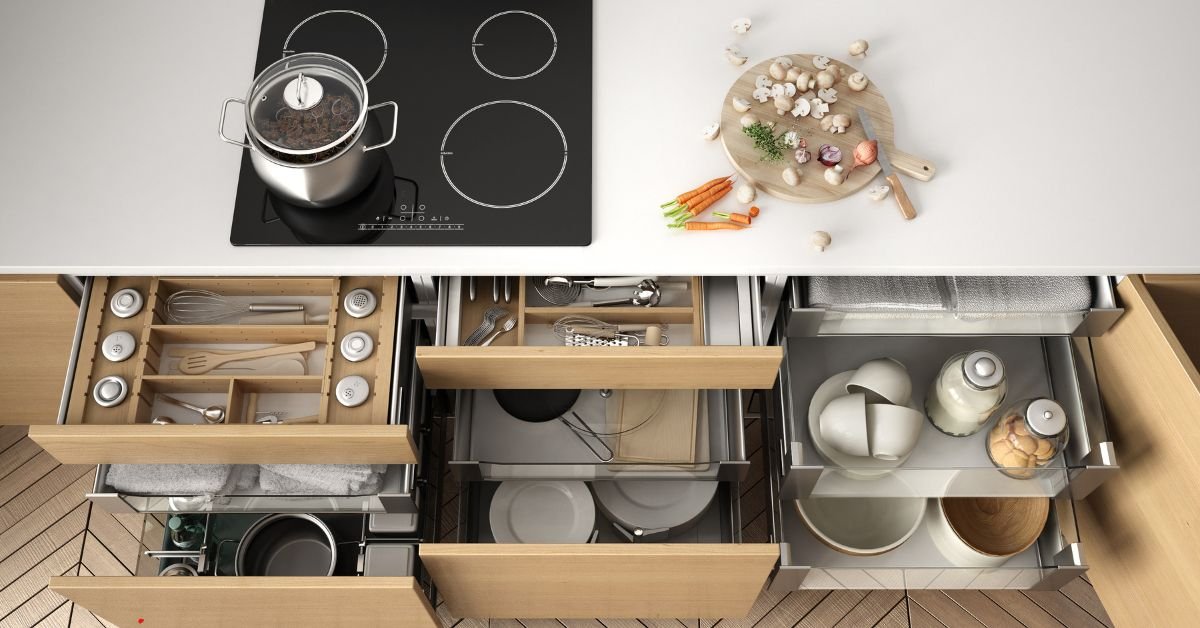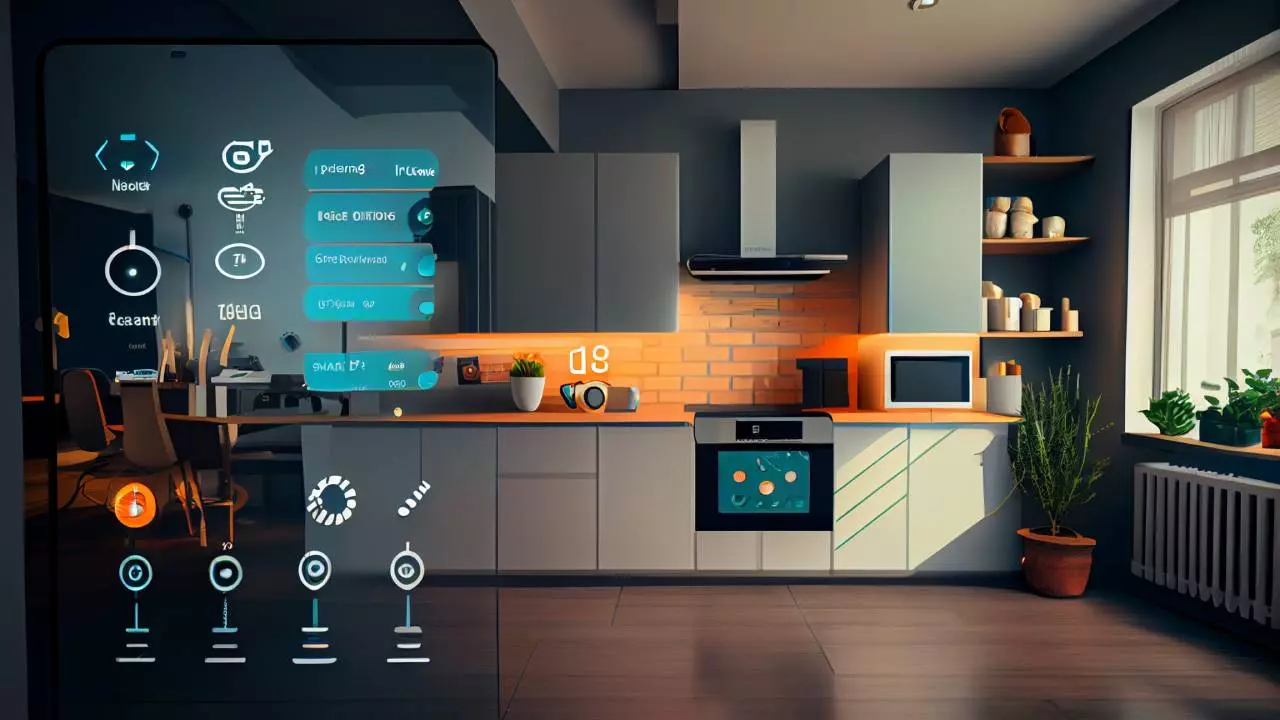Comprehensive Guide to Smart Kitchen Lighting Solutions
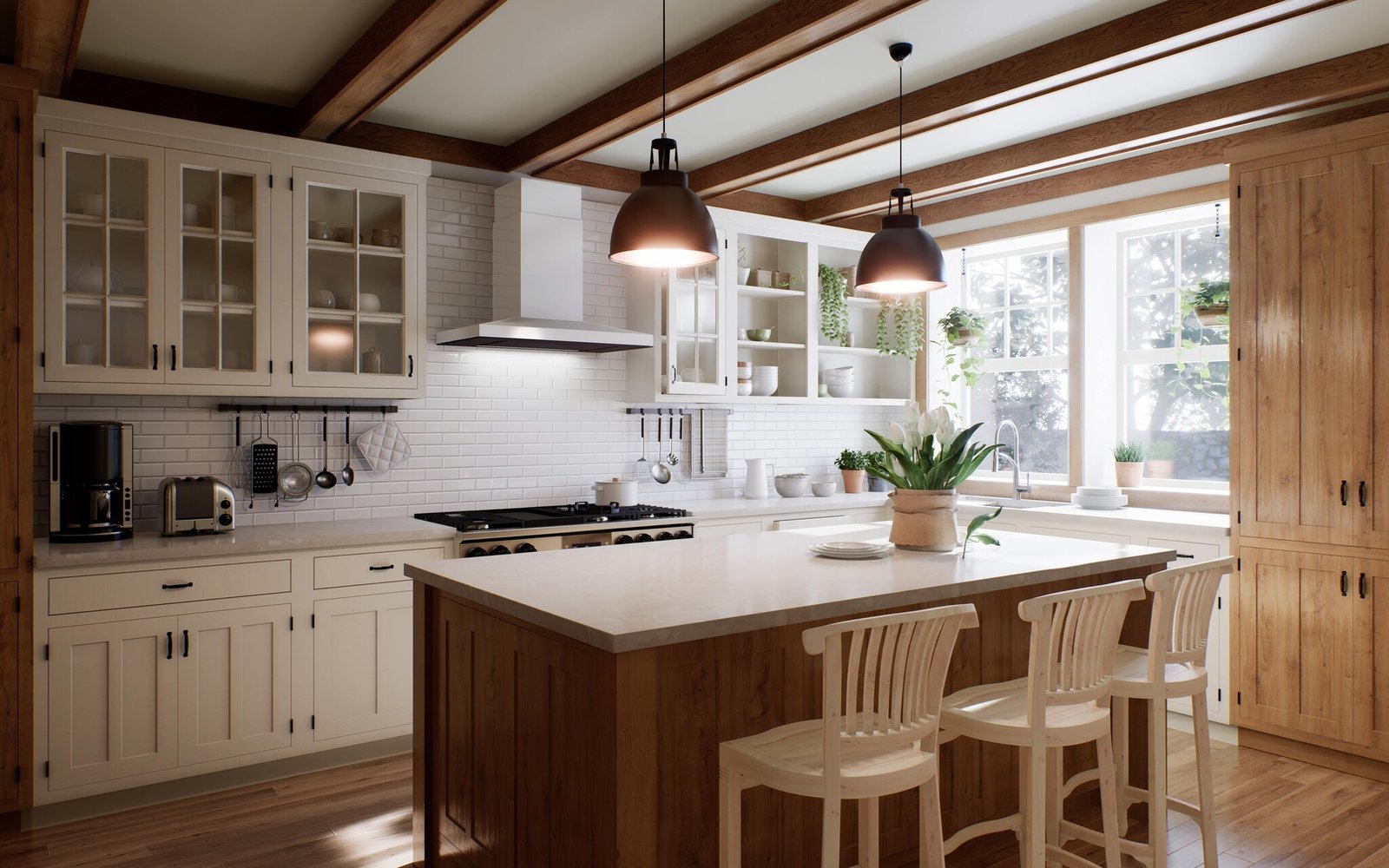
Lighting is often one of the most overlooked aspects of kitchen design, yet it plays a crucial role in both functionality and aesthetics. The right lighting can transform a kitchen, making it not only more efficient for cooking and cleaning but also more inviting for dining and socializing.
With the advent of smart technology, kitchen lighting has evolved to offer more control, customization, and energy efficiency than ever before.
This comprehensive guide will delve into the world of smart kitchen lighting, exploring its various types, key features, and numerous benefits, and offering practical advice on how to choose and install the right system for your home.
Smart Kitchen Lighting
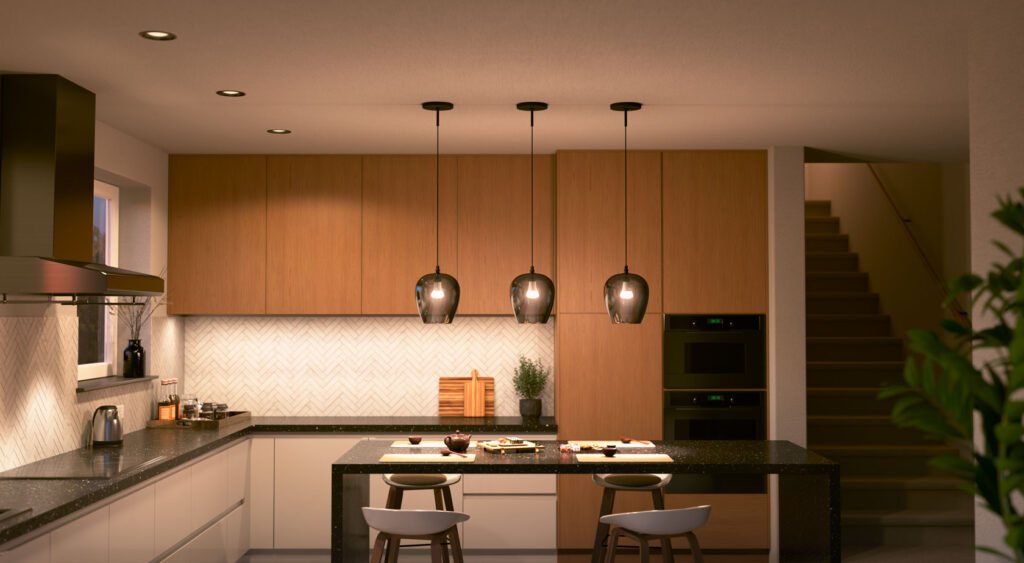
Smart lighting refers to lighting systems that can be controlled remotely via a smartphone app, voice commands, or automated schedules. These systems often include features such as adjustable brightness and color, energy monitoring, and integration with other smart home devices.
The aim is to provide a more convenient, efficient, and customizable lighting solution compared to traditional lighting systems.
Importance of Proper Kitchen Lighting
Proper lighting in the kitchen is essential for several reasons. Firstly, it enhances functionality by providing adequate illumination for cooking, cleaning, and other tasks.
Secondly, it contributes to the ambiance, creating a warm and inviting atmosphere for dining and entertaining. Lastly, it can significantly improve energy efficiency, reducing electricity consumption and lowering utility bills.
Smart lighting takes these benefits a step further by offering advanced features that allow for even greater control and customization.
Types of Smart Kitchen Lighting
Let’s Explore some Types of Smart Kitchen Lighting.
1. Smart Bulbs
Smart bulbs are the most basic form of smart lighting and can be easily installed in existing fixtures. They are controlled via a smartphone app or voice commands and offer features such as adjustable brightness and color. Popular brands include Philips Hue, LIFX, and Sengled.
Features and Benefits: Smart bulbs are easy to install and provide a flexible lighting solution. They can be used to create different lighting scenes for various activities and moods. Additionally, they are energy-efficient and have a long lifespan.
Popular Brands and Models: Philips Hue offers a wide range of smart bulbs with features such as color-changing capabilities and integration with voice assistants. LIFX bulbs are known for their high brightness and wide color range. Sengled bulbs are more affordable and offer basic smart features.
2. Smart Light Strips
Smart light strips are flexible and can be placed in various locations to provide accent or task lighting. They are often used under cabinets, along countertops, or inside cabinets to enhance visibility and add a modern touch.
Versatility and Placement Options: Light strips can be cut to size and installed in various locations to highlight architectural features or provide additional task lighting. They can also be used to create a decorative effect by outlining countertops or islands.
Use Cases in the Kitchen: Under-cabinet lighting improves visibility on countertops, making it easier to prepare food and perform other tasks. Light strips can also be installed inside cabinets to make it easier to find items. Additionally, they can be used as accent lighting to create a modern and stylish look.
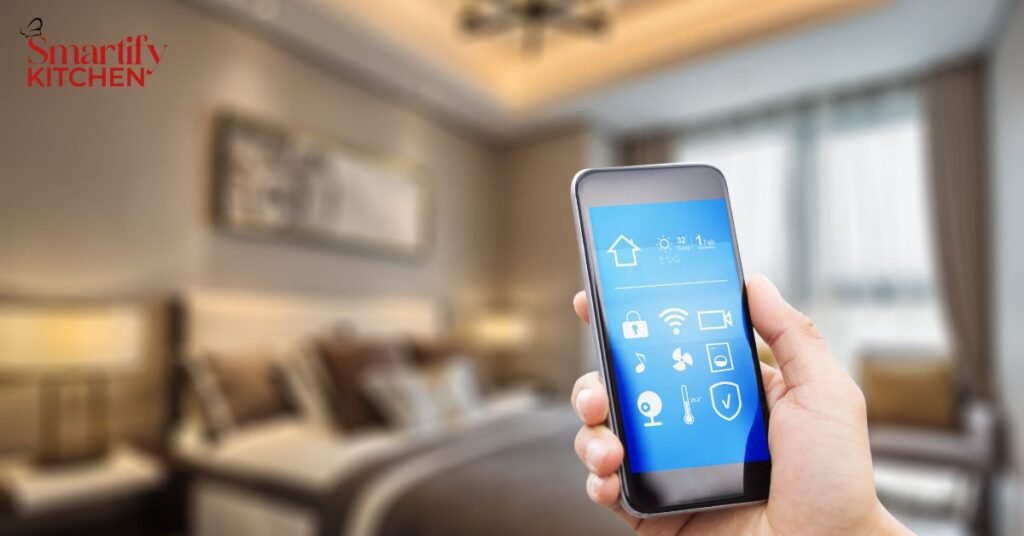
3. Smart Ceiling Lights
Smart ceiling lights provide general illumination and can be integrated with other smart home devices for a seamless lighting experience. They often come with advanced features such as adjustable color temperature and brightness.
Integration with Other Smart Home Devices: Smart ceiling lights can be connected to home automation systems, allowing them to be controlled in conjunction with other smart devices such as thermostats, sensors, and security systems.
Advanced Features: Many smart ceiling lights offer tunable white light, allowing users to adjust the color temperature to match different times of the day. This can help create a more comfortable and natural lighting environment.
4. Smart Under-Cabinet Lighting
Under-cabinet lighting provides focused illumination on countertops, enhancing visibility and reducing shadows. Smart under-cabinet lights offer the added benefit of remote control and automation.
Enhancing Task Lighting: Properly lit countertops are essential for performing kitchen tasks safely and efficiently. Smart under-cabinet lights can be dimmed or brightened as needed to provide the right amount of light for different tasks.
Installation Tips and Tricks: Smart under-cabinet lights can be installed using adhesive strips or mounting brackets. It’s important to ensure even spacing to achieve consistent lighting. Additionally, consider using light strips that can be cut to size for a custom fit.
5. Smart Pendant and Track Lighting
Pendant and track lighting add both style and functionality to kitchen spaces. Smart versions of these lights offer customization and integration with other smart devices.
Style and Functionality: Pendant lights provide focused lighting over kitchen islands or dining areas, while track lighting allows for adjustable spotlights in different areas. Smart versions of these lights offer advanced features such as adjustable brightness and color.
Examples of Effective Use in Kitchen Spaces: Pendant lights can be used to create a focal point over a kitchen island, while track lighting can be used to highlight artwork or architectural features. Smart features allow for easy adjustment of lighting scenes to suit different activities and moods.
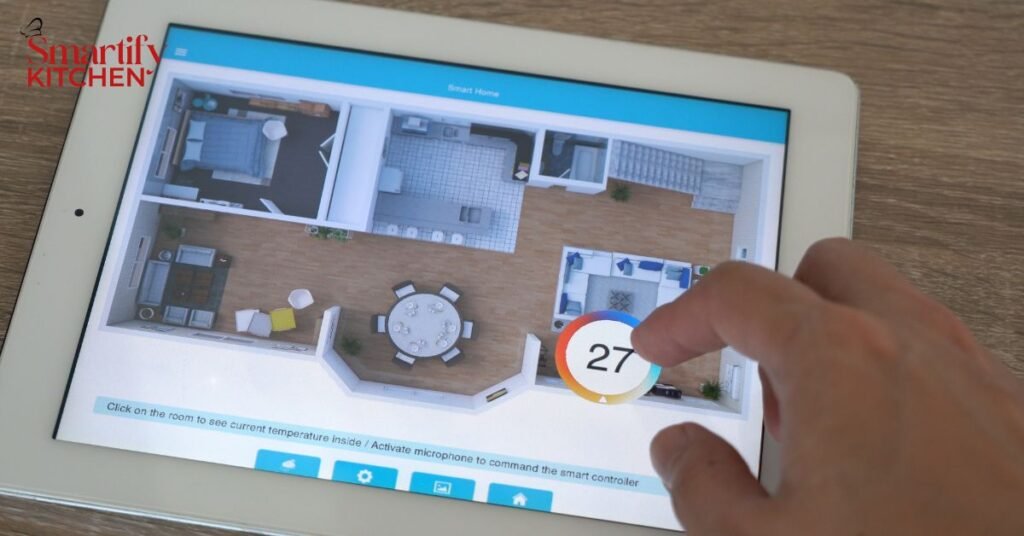
Key Features of Smart Kitchen Lighting Systems
Let’s Explore some of the Key Features of Smart Kitchen Lighting Systems.
A. Voice Control
Voice control is a major advantage of smart lighting systems, allowing users to control their lights hands-free using voice assistants like Alexa, Google Assistant, or Siri.
Integration with Voice Assistants: Smart lights can be linked to voice assistants, enabling commands such as “Turn on the kitchen lights” or “Dim the lights to 50%.” This adds a level of convenience, especially when your hands are occupied.
Examples of Voice Commands and Their Benefits: Voice commands can be used to adjust lighting while cooking, ensuring hands are free for other tasks. For example, “Set kitchen lights to cooking mode” can change the lighting to a brighter setting, while “Set kitchen lights to dinner mode” can create a softer, more intimate ambiance.
B. Remote Control via Smartphone Apps
Smart lighting systems come with dedicated apps that allow users to control their lights remotely, even when they are not at home.
Setting Schedules and Timers: Users can set schedules for their lights to turn on and off at specific times, ensuring energy efficiency and added security. For example, lights can be set to turn on automatically in the morning and turn off at bedtime.
Adjusting Brightness and Color Remotely: The ability to control lighting remotely adds convenience, especially when users want to adjust lighting based on changing conditions or moods. For example, you can turn on the lights before you arrive home or adjust the brightness for a movie night without leaving your seat.
C. Automation and Schedules
Automation features allow users to create routines and schedules for their lights, enhancing convenience and energy efficiency.
Creating Routines for Different Times of the Day: Morning routines might involve bright, energizing light, while evening routines could feature softer, warmer lighting. Automation can help create a more natural and comfortable lighting environment.
Energy-Saving Benefits of Automation: Automated schedules ensure lights are not left on unnecessarily, reducing energy consumption and costs. For example, lights can be set to turn off automatically when no motion is detected for a certain period.
D. Integration with Other Smart Home Devices
Smart lighting systems can be integrated with other smart home devices for a cohesive and automated home environment.
Syncing with Smart Thermostats, Sensors, and Security Systems: Lights can be programmed to work in conjunction with other devices, such as turning on when motion is detected or adjusting based on ambient light conditions. This enhances the overall functionality and efficiency of smart home systems.
Benefits of a Fully Integrated Smart Home Ecosystem: Integration enhances the overall functionality and efficiency of smart home systems, creating a seamless user experience. For example, lights can be set to turn on automatically when you arrive home or adjust based on the time of day.

Benefits of Smart Kitchen Lighting
Let’s Review some of the Benefits of Smart Kitchen Lighting.
1) Improved Convenience and Flexibility
Smart kitchen lighting offers unparalleled convenience and flexibility, allowing users to customize their lighting to suit different activities and preferences.
Easy Control and Customization: With smartphone apps and voice control, adjusting lighting settings is quick and easy. Users can create different lighting scenes for various activities, such as cooking, dining, or entertaining.
Adaptability to Different Kitchen Activities: Different lighting settings can be created for cooking, dining, and entertaining, enhancing the overall kitchen experience. For example, bright lighting can be used for cooking, while softer lighting can create a cozy atmosphere for dining.
2) Enhanced Energy Efficiency
Smart lighting systems are designed to be energy-efficient, reduce electricity consumption, and save money on utility bills.
Lower Energy Consumption: LED bulbs and automated schedules contribute to significant energy savings. Smart features such as motion detection and ambient light sensors further enhance energy efficiency.
Cost Savings on Electricity Bills: Reduced energy usage translates to lower electricity bills, making smart lighting a cost-effective investment. Additionally, the long lifespan of LED bulbs reduces the need for frequent replacements.
3) Increased Safety and Security
Proper lighting is essential for safety in the kitchen, and smart lighting systems enhance this by providing better illumination and integrating with security systems.
Better Illumination for Safer Cooking and Cleaning: Bright, focused lighting reduces the risk of accidents and injuries. Proper lighting is especially important when handling sharp objects or hot surfaces.
Integration with Security Systems for Added Protection: Smart lights can be programmed to turn on automatically when motion is detected, deterring potential intruders. This enhances the overall security of your home.
4) Aesthetic Appeal and Customization
Smart lighting allows for a high degree of customization, enabling users to create the desired ambiance and highlight key features of their kitchen.
Creating the Desired Ambiance with Color and Intensity Adjustments: Different lighting scenes can be set for various occasions, from bright and vibrant to soft and cozy. For example, colorful lighting can create a festive atmosphere for parties, while warm lighting can create a relaxing environment for family dinners.
Highlighting Architectural Features and Décor: Smart lighting can be used to showcase design elements and enhance the overall aesthetic of the kitchen. For example, under-cabinet lighting can highlight the beauty of countertops, while track lighting can accentuate artwork or architectural details.
How to Choose the Right Smart Kitchen Lighting Solution
Let’s Explore some tips on How to Choose the Right Smart Kitchen Lighting Solution.
Assessing Your Kitchen Needs
Before choosing a smart lighting solution, it’s important to assess the specific needs of your kitchen based on its size, layout, and functionality.
Size and Layout Considerations: Larger kitchens may require more lighting sources, while smaller kitchens might benefit from focused task lighting. Consider the overall layout and how different types of lighting can be used to achieve optimal illumination.
Specific Lighting Requirements for Different Kitchen Zones: Identify areas that need more illumination, such as countertops, sinks, and dining areas. For example, task lighting is essential for cooking, while ambient lighting is important for dining and entertaining.
Budget Considerations
Budget is a key factor when selecting smart lighting solutions. It’s important to find a balance between cost and features.
Cost of Smart Lighting Systems: Smart lighting can range from affordable smart bulbs to more expensive integrated systems. Consider the overall cost of the system and how it fits within your budget.
Balancing Features and Price: Determine which features are essential and which ones can be compromised to fit within your budget. For example, basic smart bulbs may be more affordable than advanced systems with voice control and automation.
Compatibility with Existing Smart Home Systems
Ensure that the smart lighting system you choose is compatible with your existing smart home devices and systems.
Ensuring Seamless Integration: Compatibility issues can be avoided by choosing products from the same ecosystem or brand. For example, if you already have a smart home system from a particular manufacturer, it’s best to choose lighting products from the same brand.
Avoiding Compatibility Issues: Research and verify compatibility before making a purchase to ensure a smooth setup process. Check product specifications and reviews to ensure that the lighting system will work with your existing smart home devices.
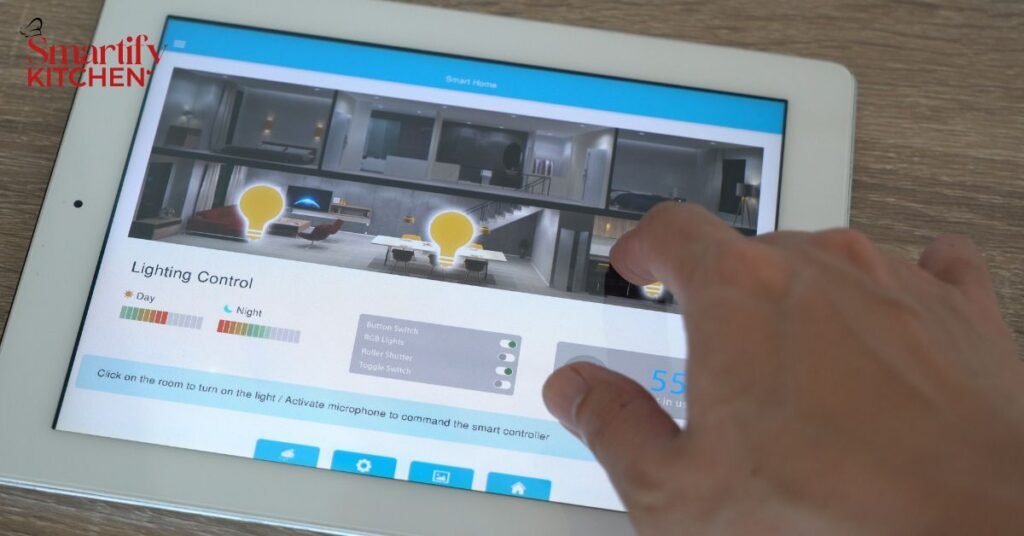
Ease of Installation and Use
Consider the installation process and user interface when selecting smart lighting systems. Some systems may require professional installation, while others are DIY-friendly.
DIY vs. Professional Installation: Assess your comfort level with installation tasks and decide whether to hire a professional or do it yourself. Many smart lighting systems are designed for easy DIY installation, but more complex setups may require professional assistance.
User-Friendly Interfaces and Controls: Choose systems with intuitive apps and controls for easy operation. User-friendly interfaces ensure that you can quickly and easily adjust lighting settings to suit your needs.
Installation and Maintenance Tips
Now, Let’s discuss some Installation and Maintenance Tips.
Installation Guidelines
Proper installation is crucial for the optimal performance of smart lighting systems.
Basic Steps for Installing Different Types of Smart Lighting: Follow manufacturer instructions for installing smart bulbs, light strips, and other fixtures. For example, smart bulbs should be screwed into existing sockets, while light strips may require adhesive backing or mounting brackets.
Common Pitfalls to Avoid: Ensure proper wiring and avoid overloading circuits to prevent issues. Follow installation guidelines carefully to avoid common mistakes, such as incorrect placement or improper connections.
Maintenance and Troubleshooting
Regular maintenance and troubleshooting are essential to keep your smart lighting system in top condition.
Keeping Your Smart Lighting System in Top Condition: Clean fixtures regularly and check for software updates to ensure optimal performance. For example, dusting light bulbs and fixtures can help maintain their brightness and efficiency.
Addressing Common Issues and Problems: Familiarize yourself with common troubleshooting steps, such as resetting devices and checking network connections. If issues persist, consult manufacturer support or seek professional assistance.
Upgrading and Expanding Your System
As technology evolves, you may want to upgrade or expand your smart lighting system.
Adding New Components and Features: Consider adding new lights or upgrading to newer models with advanced features. For example, you might start with basic smart bulbs and later add smart light strips or ceiling lights.
Future-Proofing Your Smart Kitchen Lighting: Choose systems that can be easily expanded or upgraded to stay current with technological advancements. For example, opt for lighting systems that are compatible with future updates or additional smart home devices.
Case Studies and Real-Life Examples
Let’s Review some of the Case Studies and Real-Life Examples.
Homeowner Experiences
Learning from real-life examples can provide valuable insights into the benefits and challenges of smart kitchen lighting.
Stories of Successful Smart Kitchen Lighting Transformations: Highlight examples of homeowners who have successfully implemented smart lighting in their kitchens. For example, a homeowner might share how smart lighting improved the functionality and ambiance of their kitchen.
Lessons Learned and Best Practices: Share tips and best practices based on these experiences to help readers avoid common pitfalls. For example, advice on choosing the right type of lighting for different kitchen zones or ensuring proper installation.
Expert Insights
Gaining insights from professionals can help readers make informed decisions about smart kitchen lighting.
Tips from Interior Designers and Smart Home Experts: Include expert advice on designing and implementing smart lighting systems. For example, an interior designer might provide tips on integrating smart lighting with kitchen décor and layout.
Recommendations for Maximizing the Benefits of Smart Lighting: Share strategies for optimizing the use and functionality of smart lighting. For example, recommendations on creating effective lighting scenes for different activities and moods.

Conclusion
Smart kitchen lighting offers numerous benefits, including improved convenience, energy efficiency, safety, and aesthetic appeal.
By understanding the different types of smart lighting, key features, and how to choose the right solution, homeowners can enhance their kitchen experience significantly.
Investing in smart kitchen lighting is a step towards a more modern, efficient, and enjoyable kitchen environment. The ability to customize and control lighting settings adds a new level of convenience and functionality to one of the most important spaces in the home.



